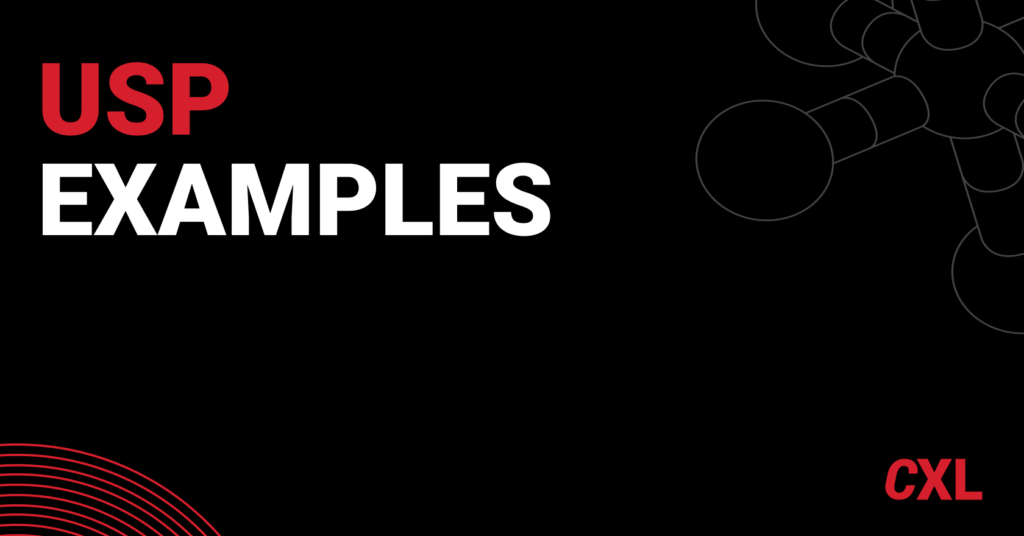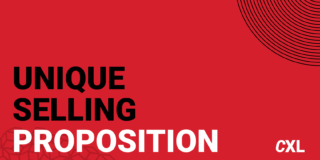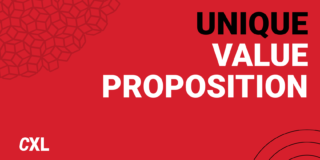Your unique selling proposition (USP) separates you from the competition. Similar to a unique value proposition, for customers, it’s a reason to trust and choose you ahead of someone else. For you, it’s the linchpin that powers your sales and marketing efforts. But what does a USP look like?
In this article, we’ll demonstrate what makes an effective USP by sharing some of the best examples from the worlds of SaaS, e-commerce, and DTC.
You’ll learn why and how these brands get it right so you can follow their lead to unearth your own competitive advantage.
Table of contents
What is a unique selling proposition?
A unique selling proposition (USP) is a statement that communicates your strengths and benefits over your competition’s. A good one makes your product or brand stand out amongst the noise. We have a great blog post on unique selling propositions that you should definitely check out.
Unique selling points vs unique value propositions
USP and UVP are occasionally used interchangeably; but they shouldn’t be. The two are similar, but have different purposes. A unique selling proposition focuses on what separates you from the competition. In comparison, a unique value proposition focuses solely on the benefit that you provide to the customer.
Examples of effective unique selling propositions in SaaS
Stripe
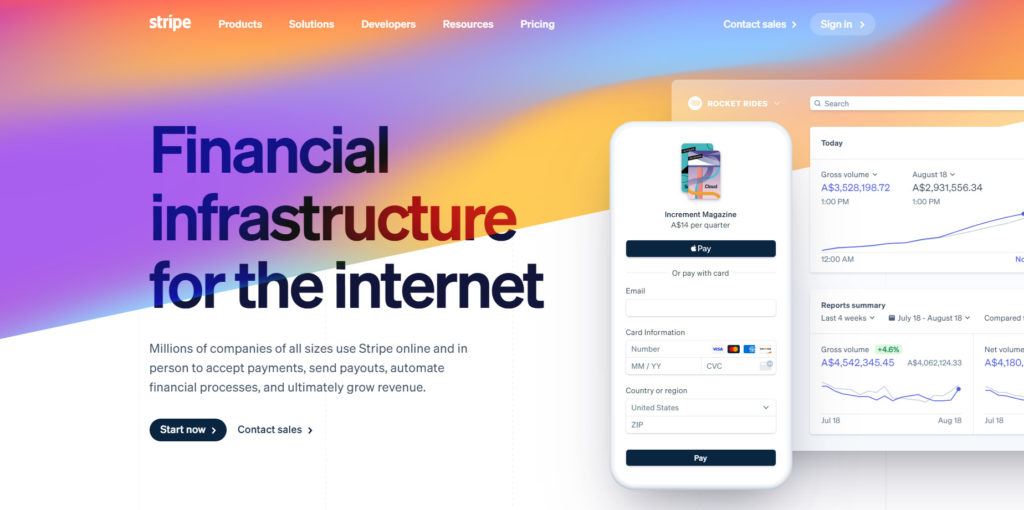
Stripe is an online payment processing provider that allows businesses to accept payments from their customers.
It operates in the same market as PayPal, yet distinctly stands out. How? By going after developers.
Rather than simply providing a payment gateway like PayPal, Stripe offers “Financial infrastructure for the internet.” It gives developers everything they need to manage their online payments.
Millions of companies of all sizes use Stripe online and in person to accept payments, send payouts, automate financial processes, and ultimately grow revenue.
Stripe website
This level of control isn’t for everyone. But for developers and business owners who want to get hands-on with payments processes, Stripe’s software and APIs offer full control, eliminating the hassle of bringing together disparate systems.
Stripe is a company that knows its target audience—and its USP reflects this. This helps them filter out people who aren’t suitable as much as it attracts those who are.
Robinhood
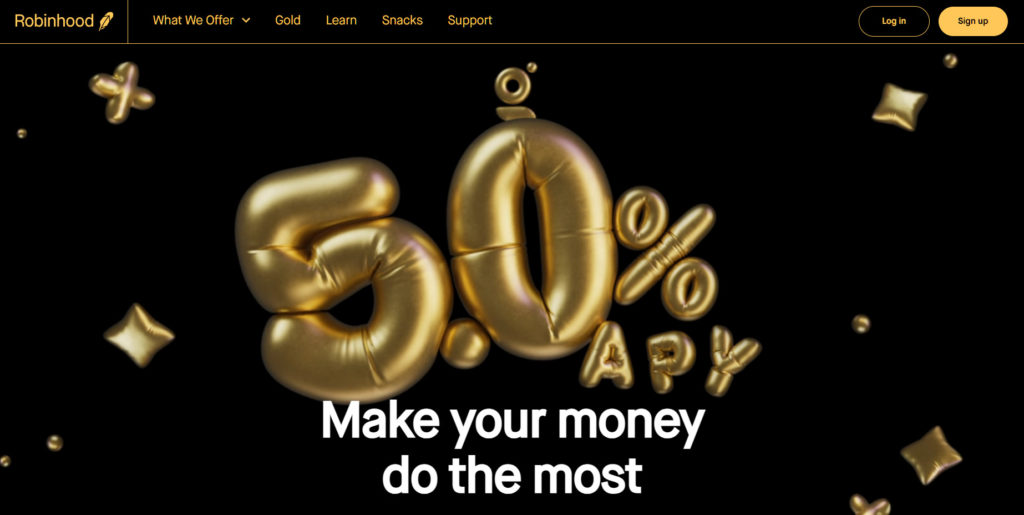
Robinhood is an investing platform that believes the financial system should work for everyone, not just the wealthy.
Anyone with an interest can invest in thousands of stocks with as little as $1 from their smartphone with no prior knowledge of the markets.
Its slogan is as simple and accessible as its platform:
Make your money do the most.
Robinhood website
Robinhood is an example of letting the product guide a USP. The company breaks down barriers in a market that’s traditionally closed off to the everyday person. Uniting people in this way is a powerful selling point.
Spotify for Podcasters
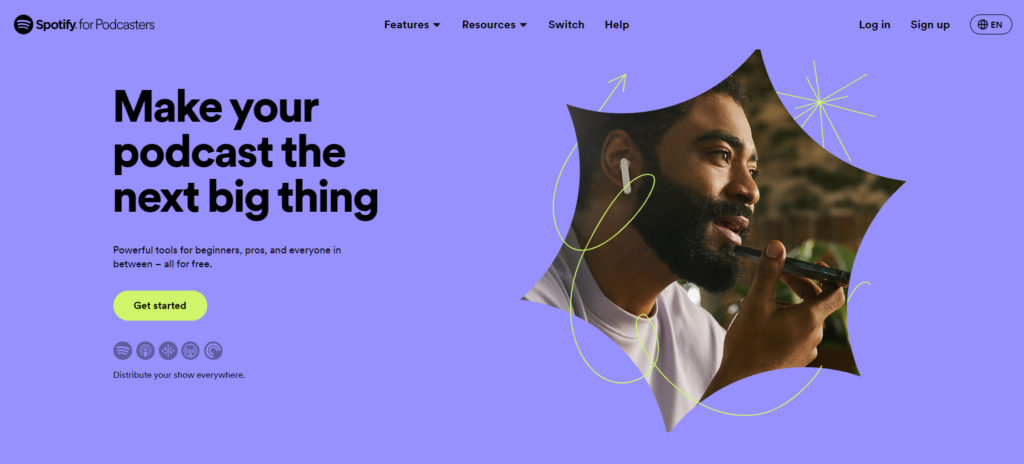
What used to be Anchor, now Spotify’s podcasting tool, Spotify for Podcasters gets straight to the point:
Make your podcast the next big thing
Powerful tools for beginners, pros, and everyone in between – all for free.
Spotify for Podcasters
This USP breaks down any obstacles standing in the way of a customer wanting to start a podcast. Here is a platform that helps you do what you want, from where you want, and doesn’t charge for the privilege.
If your brand truly offers something no one else does, your USP can be as simple as saying what you see.
Canva

Canva is an online design and publishing platform aimed at making it easy for anyone to create and share vector graphics. Its USP reflects this:
“Empowering the world to design”
It’s a nod to the simplicity of Canva’s tools. It also separates the platform from competitors like Adobe PhotoShop and Illustrator, and ProCreate, whose products are aimed towards experienced artists.
While rival tools offer more advanced editing features, they come with a steeper learning curve. Canva’s drag-and-drop shapes and elements let complete novices design a professional image, flyer, or document in minutes.
By understanding its place in the market, they’ve been able to unearth a competitive advantage. It’s a lesson in how to turn what could be seen as a weakness into a strength.
ConvertKit
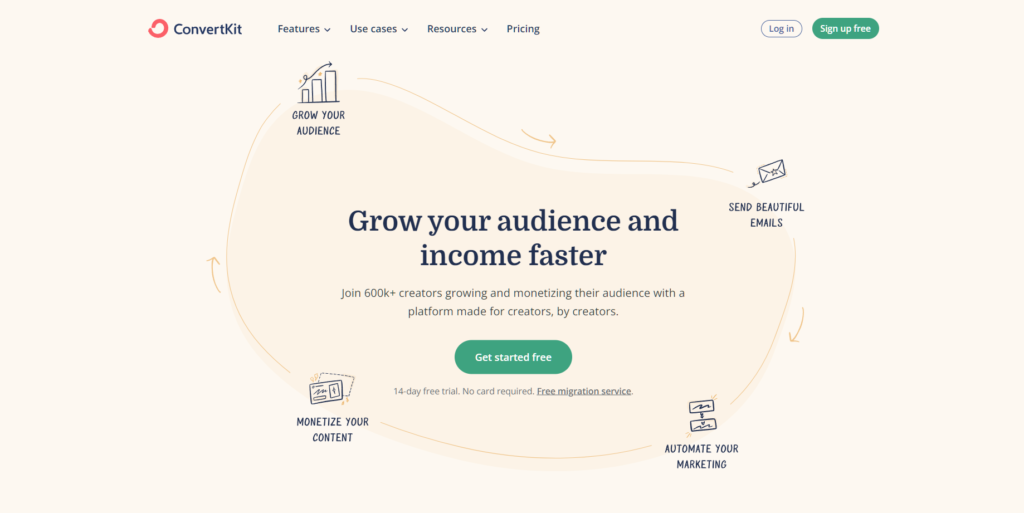
On the surface, there’s not much to separate ConvertKit from other email marketing platforms like MailChimp or iContact. Yet, they’re a SaaS brand that generates over $2 million in monthly recurring revenue every month.
How? Because they know their target audience. ConvertKit provides email marketing tools for independent creators, a segment of the target market only they honed in on when they launched.
This audience is a central feature of their USP:
Grow your audience and income faster… with a platform made for creators, by creators.
ConvertKit website
What does ConvertKit offer that’s different? Faster audience and income growth.
How is it different from its competitors? It’s made by other creators. The implication is that ConvertKit understands and supports creators better than other platforms because of this.
GoTo Webinar
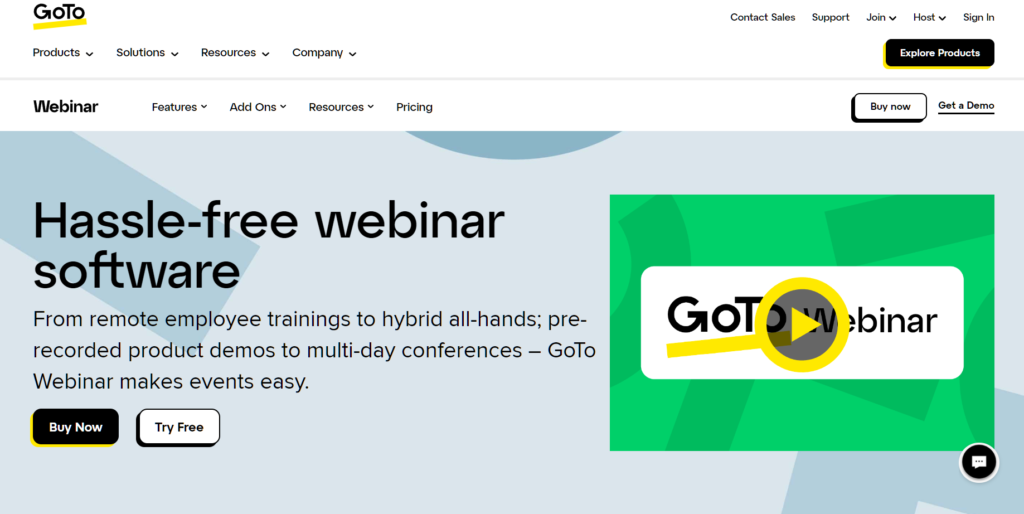
GoTo has pinpointed the key problems that people often have with webinar software: difficult to use and full of minor issues. So its USP is simple:
Hassle-free webinar software… makes events easy.
GoTo website
To boost the impression, it makes sure visitors know they can try it before they buy. No drama; just ease of use.
SoundCloud

Soundcloud has become renowned as a place for creators and fans to connect, share music and discover new tracks, raw demos, and podcasts. The community aspect of the platform helps it stand out from the likes of Spotify and Apple Music, where artists and fans are separate. This is communicated in its USP:
“What’s next in music is first on SoundCloud. Upload your first track and begin your journey.
“SoundCloud gives you the space to create, find your fans, and connect with other artists.”
Not only do they tailor their value proposition at the prospect, they tell a story. SoundCloud knows that artists who make it big will likely monetize their music with a record label or streaming platform. It capitalizes on being a place to grow a word-of-mouth following.
Like Canva, it’s an example of knowing where you fit in the market and using it to your advantage.
Examples of unique selling propositions in e-commerce
Death Wish Coffee
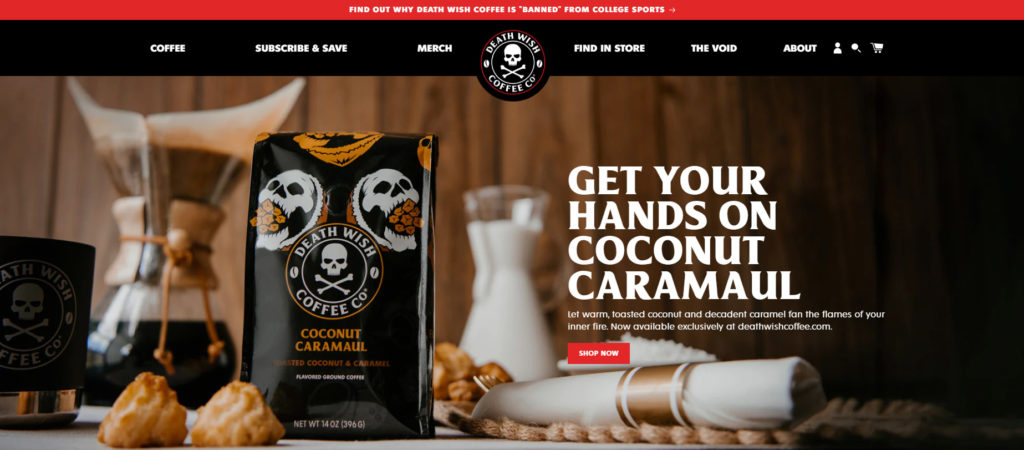
In a market dominated by rich blends and smooth tastes, Death Wish Coffee bucks the trend:
“The World’s Strongest Coffee”
Its USP instantly tells you that this coffee packs a punch. Those looking for a smooth taste are probably better served elsewhere.
Claiming to be the ‘world’s strongest’ anything is a risky strategy—one that means being able to walk the walk as well as you talk the talk. Death Wish Coffee backs itself by showing how their coffee is made and offering a full refund if you’re not satisfied with its strength.
What’s more, the company’s branding, marketing campaigns, tone of voice, and services all align with its USP. The bolder the claim, the more likely it is to be challenged. Make sure you can back up your words. Your brand should live and breathe its USP.
Patagonia
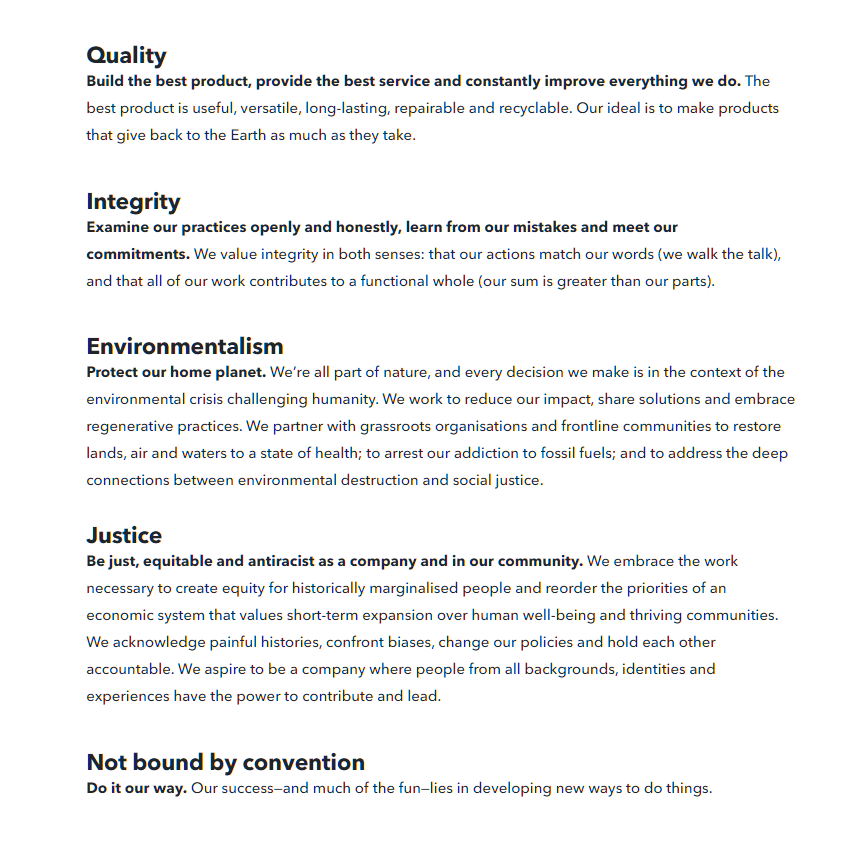
Patagonia’s USP isn’t a product or a feature, it’s their reason for existing:
“We’re In Business To Save Our Home Planet.”
This USP sets Patagonia apart from the competition by establishing itself as more than a clothing brand. It’s a lifestyle and movement dedicated to making a difference. In one sentence, Patagonia sums up a number of its unique selling points:
- Fair Trade Certified clothing, made from organic cotton and free from pesticides, herbicides, and GMO seeds
- A trade-in program that lets customers exchange used gear for store credit
- 1% of sales pledged to the preservation and restoration of the planet
It’s a USP that appeals to someone, rather than everyone, which is what all great USPs should do.
Saddleback Leather

“They’ll fight over it when you’re dead”
Saddleback Leather’s tagline conveys the unique value of its products in a single line. These are products that will outlive you.
It’s backed up by substance (each Saddleback leather product is over-engineered, comes with no breakable parts, and is backed by a 100-year warranty) and great storytelling.
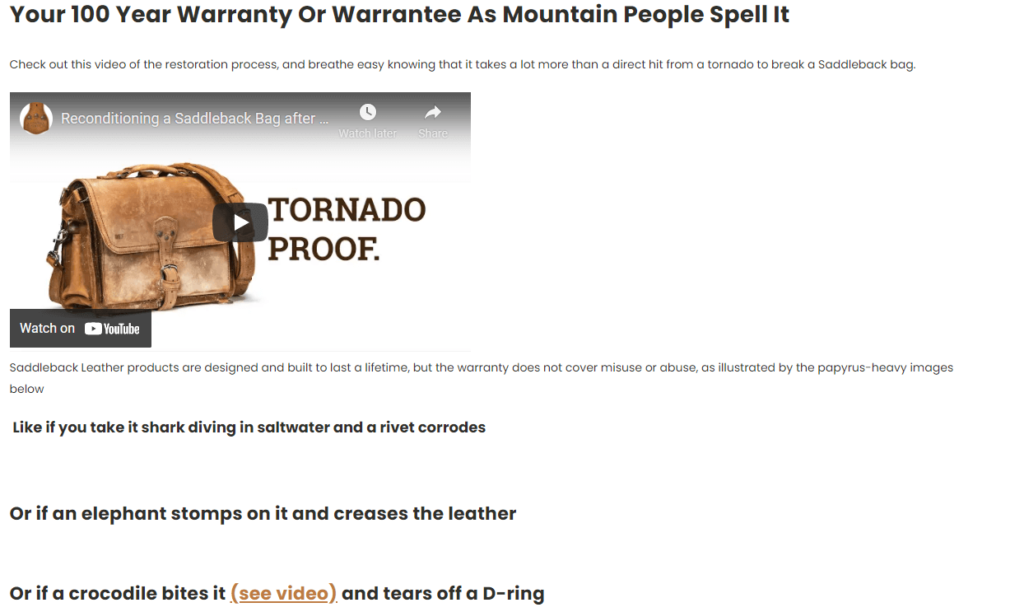
When knock-off Saddleback Leather briefcases started appearing on the market, the company also created a ‘how it’s made’ video to show off the product quality and add weight to its USP.
Like your selling points, your story is unique to you. By using storytelling to craft your USPs, you’ll stand a better chance of creating a memorable message.
TOMS
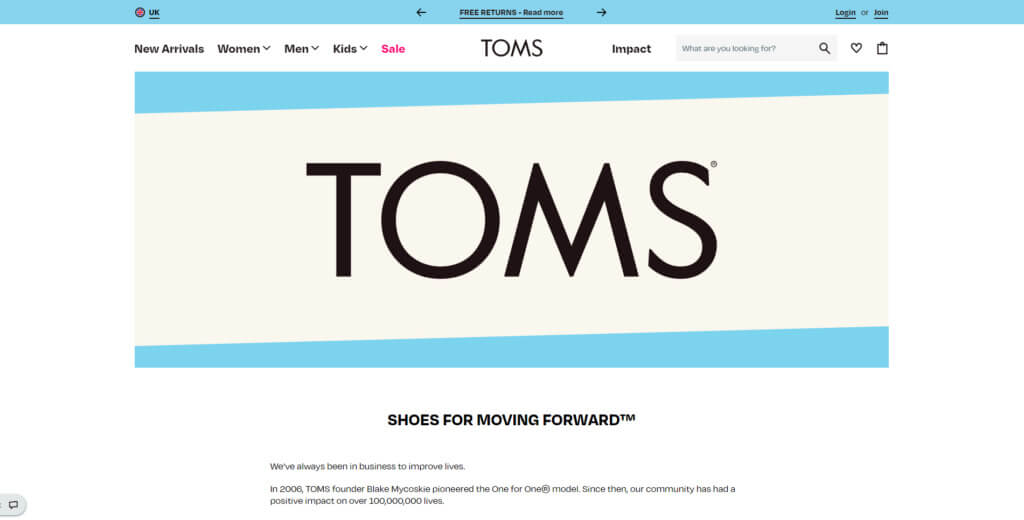
TOMS Shoes was one of the first shoe companies in the world to use a buy one, gift one model. For every pair of TOMS sold, another pair was donated to a child in need.
For a long-time, this was the company’s USP. As other companies have started to offer a similar model, TOMS’ USP has evolved. Today, the company commits one-third of its profits for grassroots goods.
But what made the one-for-one model so successful as a USP remains.
“Shoes for Moving Forward”
It taps into our want to help others and makes it easy to do so. Customers can buy shoes and feel good about doing it.
Building a USP around a cause may run the risk of alienating some people. But in uniting the company, customer, and purpose, you can create brand loyalty that lasts a lifetime.
Bee’s Wrap
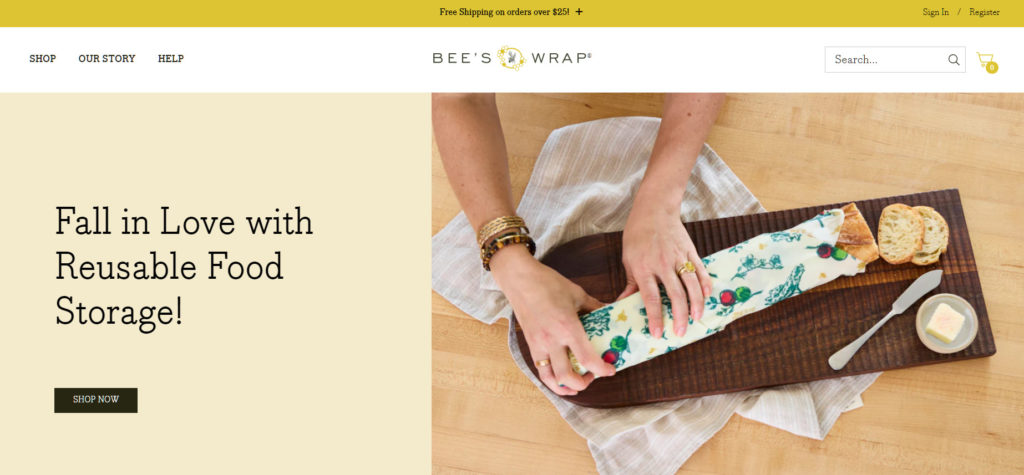
Bee’s Wrap is an e-commerce business that produces sustainable food wrap made from organic cotton and beeswax. It’s an outlier in a market of foil and plastic wrap. But even uniqueness needs a USP.
Bee’s Wrap taps into an important global topic: plastic waste.
“That’s a wrap on single-use plastic”
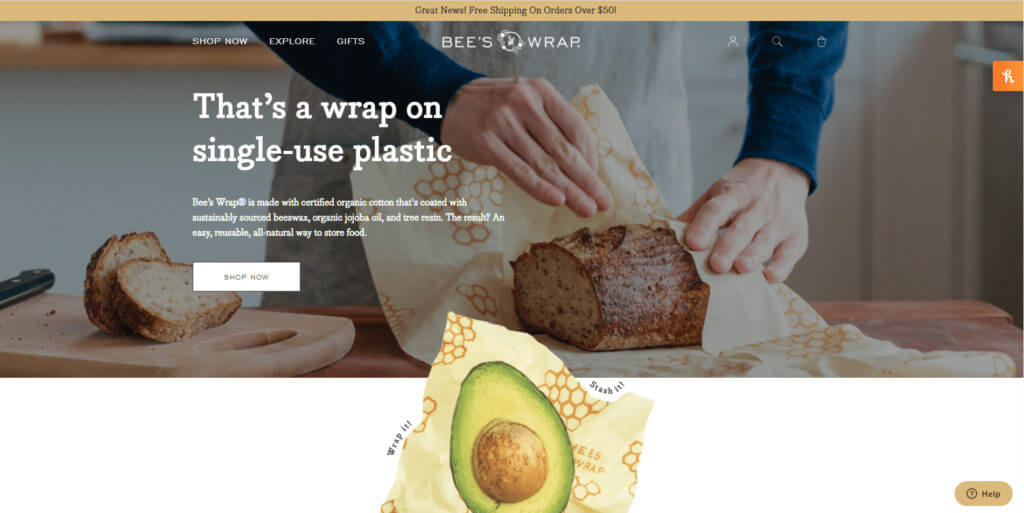
The USP promotes Bee’s Wrap as an alternative to single-use plastics and a long-term solution to the problem of plastic pollution.
But this surface-level wordplay does more than appeal to eco-conscious customers. It goes beyond the product, reflecting the company’s standing as a B Corp and Green America certified company committed to social and environmental change.
Whether your USP is product, purpose, or prospect-led, look at the big picture. Make sure your messaging represents every aspect of your brand.
Fabletics
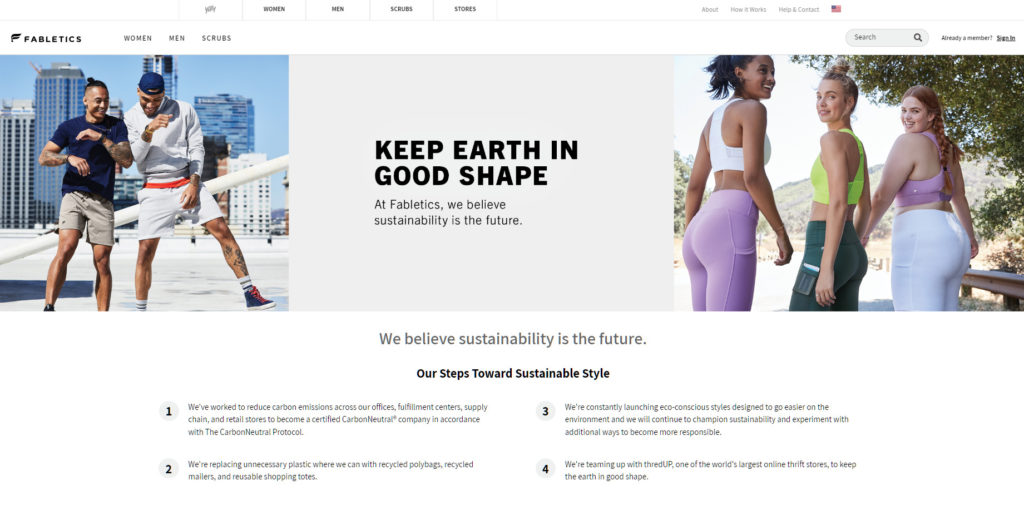
Fabletics’ USP is an example of a brand that knows who it’s talking to. It leads with honesty:
“We can’t fix your lives but we can fix your activewear. Great fit. Premium fabrics. Tech you actually need. And stylish as hell. You’re welcome.”
Fabletics isn’t a unique brand, but it’s found a unique angle. Its USP tone of voice is aimed at people who are jaded by how other brands talk and act. And its business model serves these customers by saving them time and money.
This starts with an online quiz that lets customers tailor leggings and deals to their needs, and carries through to a VIP membership program that offers up to 50% off products.
It shows that if you can find one thing the competition isn’t doing, you can use it to build a loyal following.
ASKET
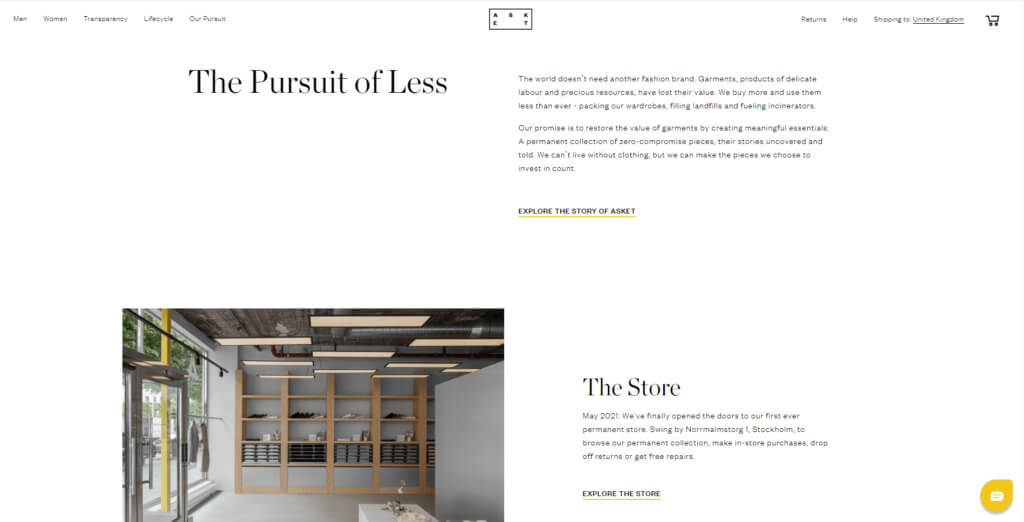
It’s unusual to hear a fashion brand talking about how the world doesn’t need another fashion brand, but ASKET’s USP taps into the zeitgeist of conscious consumption.
ASKET wants people to buy less and it promotes this in its USP by promising meaningful essentials that are traceable so customers know where their money goes.
“The Pursuit of Less
“The world doesn’t need another fashion brand. Garments, products of delicate labour and precious resources, have lost their value. We buy more and use them less than ever – packing our wardrobes, filling landfills and fueling incinerators.
“Our promise is to restore the value of garments by creating meaningful essentials: A permanent collection of zero-compromise pieces, their stories uncovered and told. We can’t live without clothing, but we can make the pieces we choose to invest in count.”
For consumers who monitor their carbon footprint, ASKET is a company you can feel proud to support. That’s a powerful thing in building a lasting brand.
When crafting your USP, listen to the conversations taking place in your industry. Find what your potential customers are passionate about and use their insights to guide your specific benefit.
Examples of unique selling propositions by Direct-to-Consumer (DTC) brands
Billie
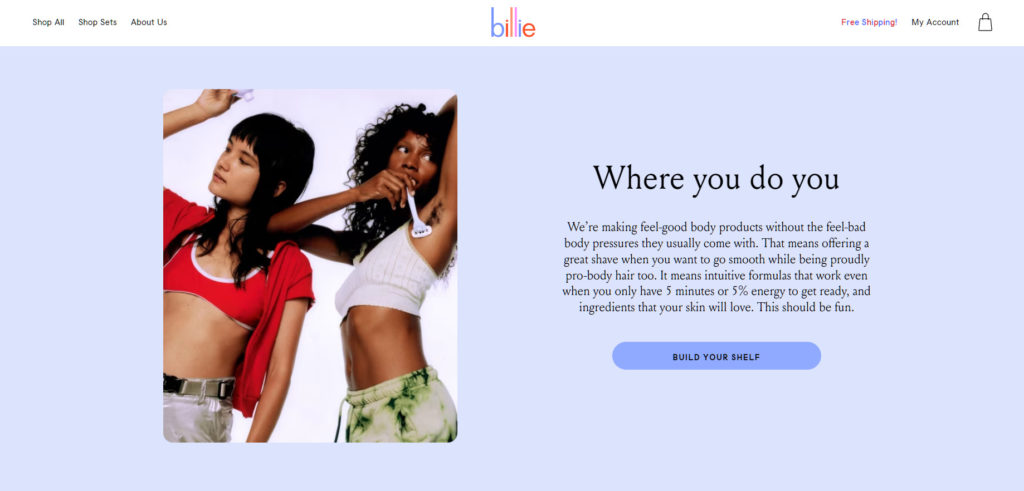
Reading the Billie‘s USP makes it immediately clear what the brand is about:
“We’re out to build a better shelf”
“It started with a razor that changed everything: We noticed that women were overpaying for razors and shamed for having body hair. Kind of a double whammy, when you think about it. So, we did away with the Pink Tax and put body hair on the big screen.
Now, meet our sparkling clean collection of better beauty basics for your medicine cabinet (and handbag and gym bag and desk drawer). Powered by ingredients that do no harm, work super hard, and take the guesswork out of clean.”
Billie is an online store and subscription service built for women who are fed up with the current state of sanitary products. It highlights this in its USP by following the problem-solution formula:
Problem: “We noticed that women were overpaying for razors”
Solution: “Meet our sparkling clean collection of better beauty basics”
“We’re out to build a better shelf” boils down that formula into a single line. Things aren’t right, so they’re doing something about it.
Run surveys, read reviews, and conduct market and user research to find the problems customers are having. Then, base your USP around your solution.
Warby Parker
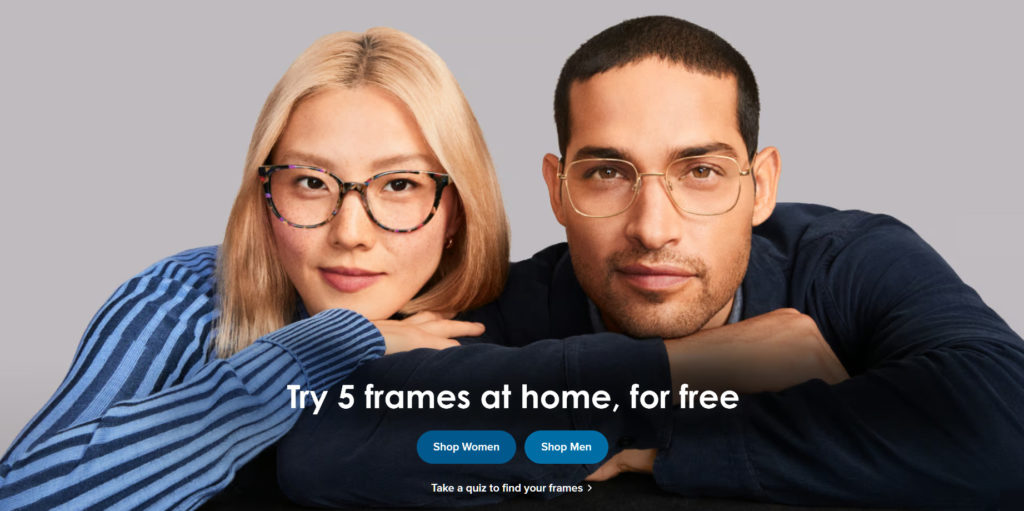
Warby Parker is an outlier as an online retailer in that it went from click-to-brick. By expanding its e-commerce business to physical stores they’ve been able to increase accessibility and meet customer needs online and offline.
Its USP is rooted in its ability to offer a seamless customer experience:
“Try 5 frames at home for free”
With a virtual try-on service, customers choose five frames to test at home for free.
Offering five frames rather than one means they’re able to rival the physical store experience, where you’d typically try on multiple frames. It also brings frames to you, eliminating the need to travel.
This USP disrupts the market, alleviating a pain point and putting customer service at the forefront of the offer. While a USP is about what you do differently from everyone else, always make it about the customer.
Hiut Denim
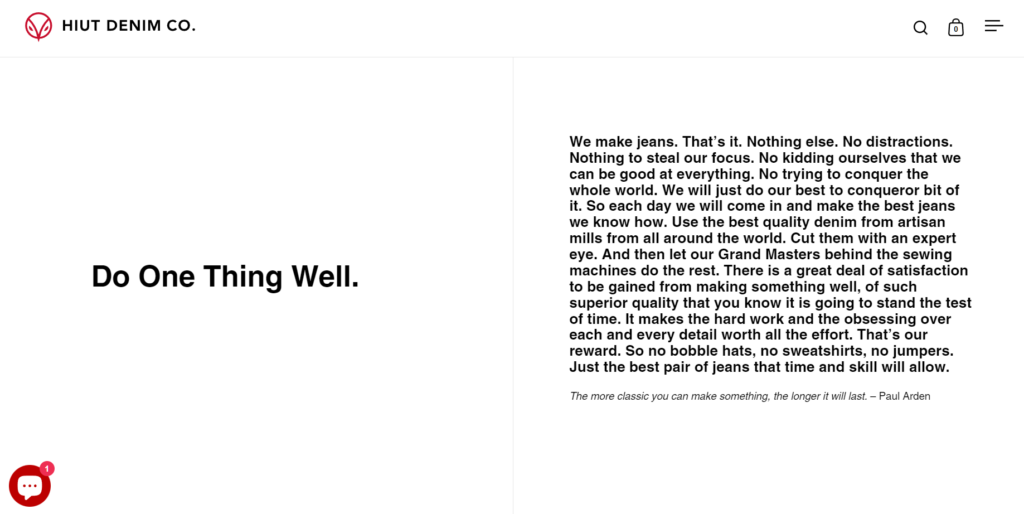
In a fashion market filled with brands that produce multiple items, Hiut Denim is a small business bucking the trend.
“We make jeans. That’s it. Nothing else. No distractions. We focus all our talents on jeans. And we are proud to say that we make some of the best jeans in the world.”
This USP works as an offer, a mission statement, and a brand story. It’s honest and tells the customer Hiut Denim is a brand that obsesses over every detail of every pair of jeans. No half measures.
It’s backed up by the company’s in-house manufacturing process and a website that breaks down exactly where and how jeans are made.
When it comes to crafting a USP that stands the test of time, finding the one thing you do well is a good path to follow.
Nerd Fitness
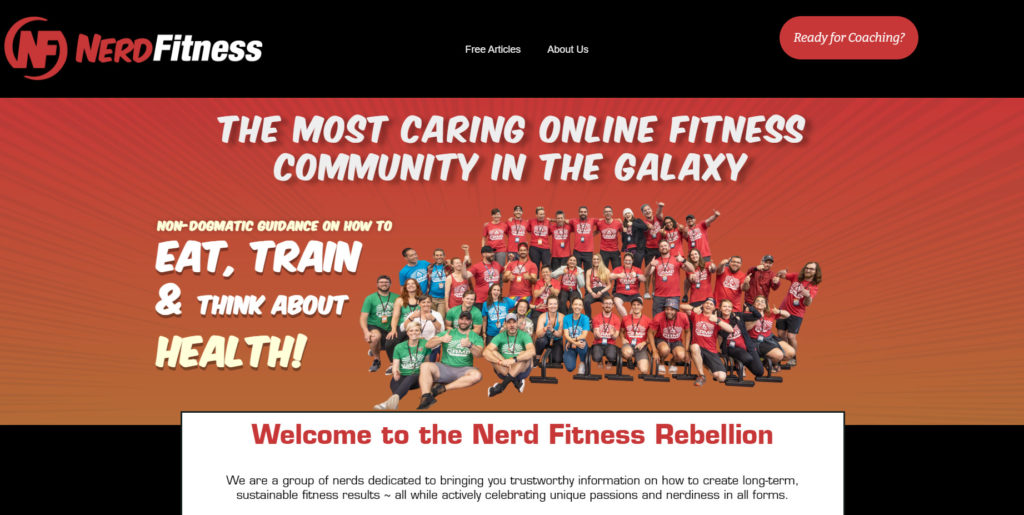
Visit the Nerd Fitness landing page and you’ll quickly know whether this is a service for you:
“We help nerds, misfits and mutants lose weight, get strong & get healthy, permanently!”
Nerd Fitness is an online community offering programs and guidance to help people lose weight and get healthy. From its video game-inspired customer avatars to its aesthetic and tone of voice, everything is geared towards nerds.
What makes its USP so effective is that it focuses on the kind of people it helps. If you don’t see yourself as a nerd or misfit, you’re not going to investigate beyond the message. This means Nerd Fitness can attract the people they do want and filter out the rest.
A strong unique selling proposition that appeals to a few will always serve your brand better in the long run than a vague message that appeals to many.
HelloFresh
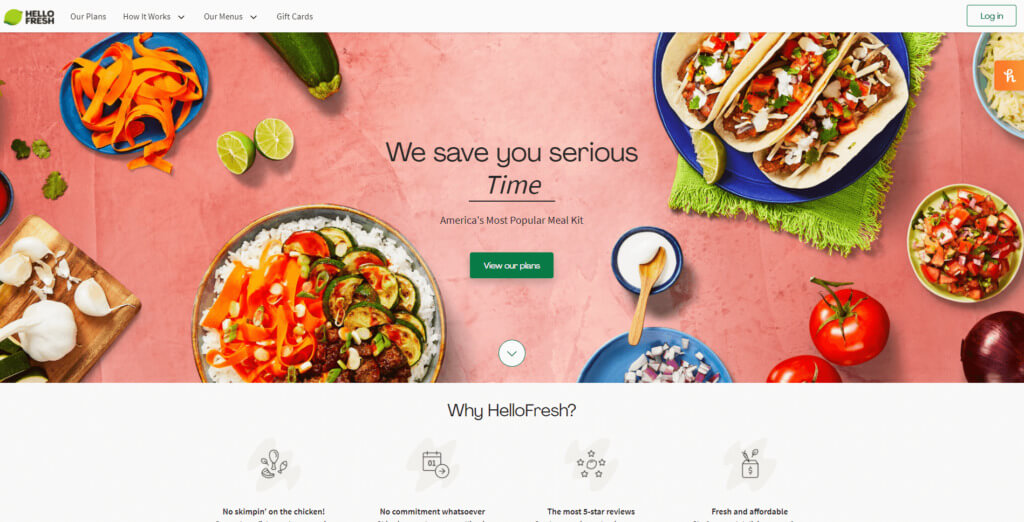
HelloFresh’s USP is a bold statement that establishes them as the best at what they do:
“America’s Most Popular Meal Kit”
This tells us that HelloFresh is trusted while delivering social proof: if it’s the most popular meal kit in America, it has to be good. It also creates FOMO: you wouldn’t want to miss out on something this popular.
Right above that statement are reasons why HelloFresh is so popular. It helps to save you serious time, money, and stress. The three main reasons why you’d look to invest in meal kits.
If you’re the best at what you do and you can communicate it, don’t be afraid to go bold with your USP.
Patch
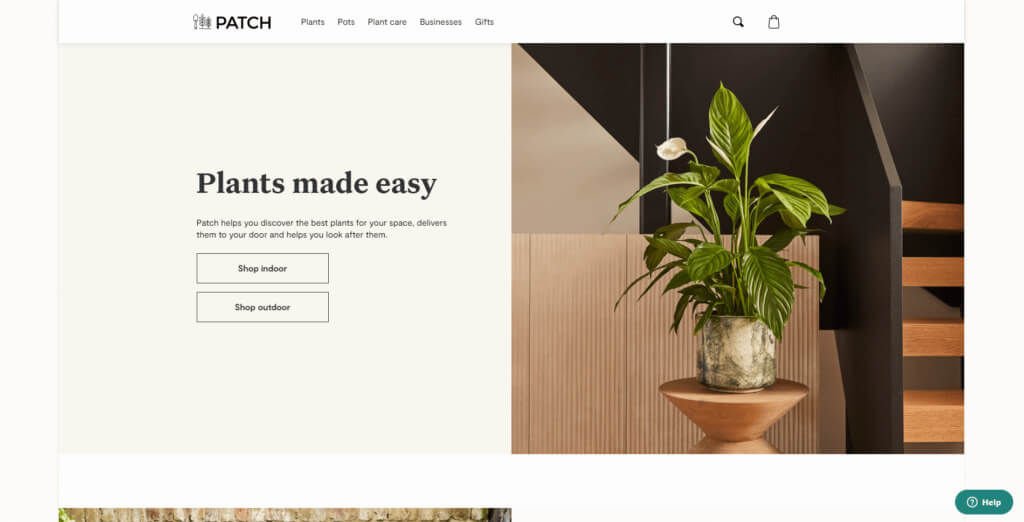
Patch is a company that aims to bring the joy of gardening to everyone. They recommend, source, and deliver plants to customers’ homes and provide tips to help look after them.
It was born out of its founders’ struggle to a) find the right plants for his home and b) keep them alive.
The company’s USP communicates these struggles and how it solves them:
“Patch helps you discover the best plants for your space, delivers them to your door and helps you look after them.”
It shows that if your business model plugs a gap in the market, your USP can be as simple as explaining your offer.
Dig down into the roots of your company. Why do you exist? The reason might well be your USP.
Taylor Stitch
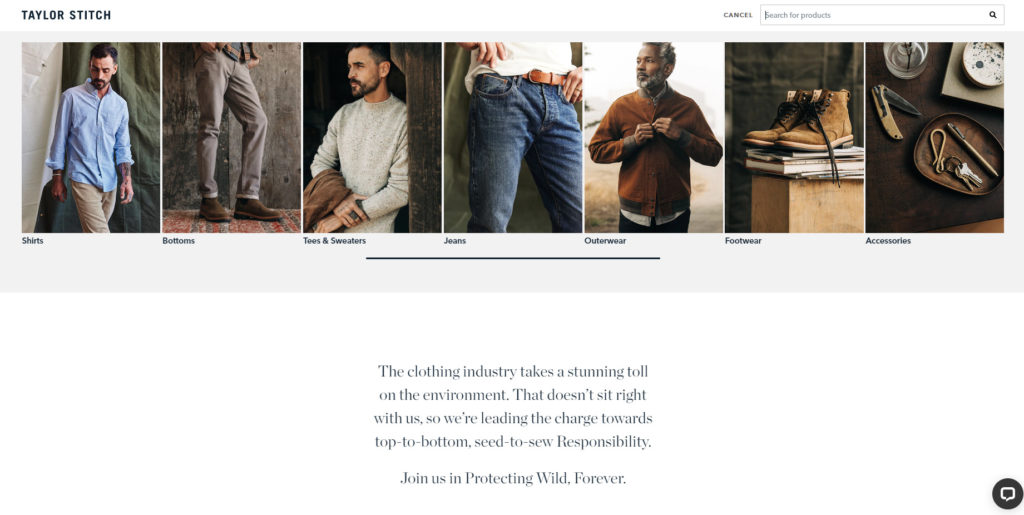
Taylor Stitch is a clothing brand that uses crowdfunding to design products. Crowdfunding in itself is not a unique selling point. Lots of brands successfully fund products in this way. But it’s how Taylor Stitch uses crowdfunding that helps them stand out.
“We design new products. You crowd fund them and save 20%. Our planet takes on less waste. We deliver them when they’re seasonally appropriate. Everybody wins.”
This USP makes it clear why customers benefit from crowdfunding. You save money, help the environment and get clothes when they’re needed. What’s not to like? It also highlights the social good of this business model, making it a brand you’d want to support.
Taylor Stitch is an example of how finding the right angle can turn a common approach into a unique marketing strategy.
Conclusion
Whether they’re based around product, service, prospect, or purpose, each of these unique selling propositions examples is the result of research and testing.
To find your unique angle, ask questions of your audience and drill down into your niche to uncover gaps in the market. Use research to guide your copy, then write and rewrite until you can confidently state your USP in a few sentences.
From there, test your USP with your audience. Check that it resonates and, more importantly, makes a difference to your bottom line.
Working on something related to this? Post a comment in the CXL community!
